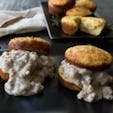It’s white, it’s granulated, and it makes you feel amazing.
Take it easy, Walter White. We aren’t talking about meth, but something that may be nearly as addictive and dangerous: sugar.
The consumption of excess sugar has been linked to heart disease, diabetes, obesity, high blood pressure, and numerous other health woes (in April, we reported on the latest research). Most people know they need to decrease their sugar intake, but stumble when they start thinking of the foods they’ll have to give up in the process. Without sugar, could life be as sweet?
Relax, because it can be. You don’t have to kick your sugar addiction cold turkey, and low-sugar eating can still provide plenty of treats. If you’ve been Googling a no-sugar diet you can live with, our plan is sustainable, can help you lose weight, and will make you feel better than ever.
How Does Sugar Affect Your Body?
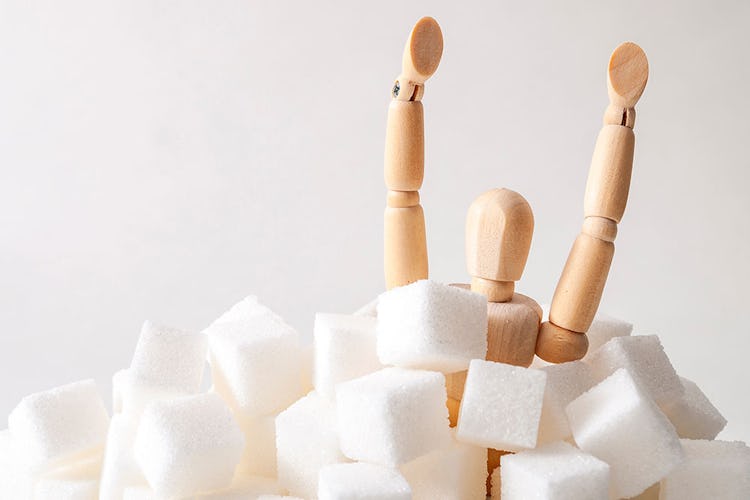
First of all, let’s explain what sugar is. When people hear the word, they immediately think of the white grains in a bowl on the breakfast table. But sugar, technically speaking, is the most basic building block of carbohydrate. With the exception of fiber, all forms of carbs are made up of what are known as simple sugars—glucose, fructose, and galactose. Simple sugars are found in fruits and sweets, for example, and when they bond with each other, they can form complex carbs, such as those in potatoes and grains. But no matter what kind of carbs you’re talking about, when they digest in the body, they’re all broken down into glucose.
“Sugar is absorbed primarily through the small intestine and into the bloodstream,” says Ashley Ortega, Wellness Manager and nutritionist for Victory Medical, a clinic in Austin, TX. “Once in the bloodstream, the pancreas is prompted to release insulin, which allows glucose to be taken into the cells so that it may be utilized to produce ATP molecules—the energy source that we use to do everything from thinking to lifting weights.”
Generally speaking, simple sugars digest very quickly and therefore raise blood sugar levels very sharply, promoting a strong insulin response. Complex carbs take longer to be broken down, and so they raise blood sugar less quickly, providing a longer, steadier supply of energy.
So, while you’ve certainly heard that sugar is “bad” for you, it isn’t inherently unhealthy. Rather, it’s a major source of energy. But when you consume excessive amounts of sugar, you run into problems. If you’re a generally healthy person who limits his/her diet to whole foods, so that your sugar intake comes almost entirely from fruits, vegetables, and whole grains, you shouldn’t have to worry about how much sugar you’re eating—it will automatically be held in check. Whole foods are naturally low in sugar, in most cases, and pack plenty of fiber to help slow down sugar’s digestion, which reduces the amount of insulin needed to manage blood sugar levels.
It’s when you eat processed foods that have sugars added to them by manufacturers that you get into trouble.
To be clear, sugar is sugar. No matter what the source, a gram of sugar has the same number of calories (four, just as every carbohydrate but fiber does) and is processed the same way in the body. But, according to Mike Roussell, Ph.D., a nutrition consultant to athletes and celebrities (mikeroussell.com), “There is a difference between eating Skittles™ and wild blueberries.” Candy, soda, and other foods we know to be unhealthy are much higher in sugar than whole foods, because the sweet stuff has been purposely added into the product. And what’s more, Roussell points out, these foods don’t have fiber like whole foods do (apart from lots of other healthy nutrients). This makes them easy to over-consume, and thereby damaging to your health. The poison is in the dose.
Eating too much sugar makes it nearly impossible for insulin to keep your blood sugar in a normal range, and that wreaks havoc on the body. According to a 2016 study, excess sugar consumption can lead to cellular dysfunction and inflammation. Furthermore, a review in the Journal of the American Medical Association found a distinct correlation between increased consumption of added sugars and the risk for cardiovascular disease—and that most adults consume far more added sugar than is recommended by health officials.
For some perspective, the U.S. Office of Disease Prevention and Health Promotion recommends people consume no more than 10% of their daily calories from added sugar, and the JAMA research discovered that, between 2005 and 2010, more than 71% of American adults took in greater amounts of the white stuff than that. In fact, 10% of us got 25% or more of our calories from added sugar.
What is the No-Sugar Diet?
The “no-sugar diet” is a popular search term on the Internet. But it’s not a branded eating philosophy; it’s a lifestyle. Also called a sugar-free diet, this way of eating seeks to remove sources of added sugar from your daily food intake. In other words, out with foods like candy and soda. Some people may also choose to limit or remove sources of natural sugar as well, such as fruits and certain vegetables. This means that no-sugar diets often have a lot in common with ketogenic diets, which we’ve been a fan of for a while.
Whether you want to cut back on sugar or cut it out completely, eating less sugar in general is a very healthy decision. A 2017 study discovered that reducing the intake of added sugar by even 20% could cut the number of life years lost through disease, disability, and early death for Americans by 777,000 by the year 2035, and save more than $10 billion in medical costs.
What is the Best Way to Cut Sugar from My Diet?
If you currently eat sugar with the rapaciousness of the average American, start by cutting back gradually, and with the most decadent and obvious sources of added sugar. You don’t necessarily need to follow a low-carb diet yet; start by following a low-crap diet.
Roussell offers a hierarchy of carbohydrates to use as a guide. “It’s based on the fact that since not all carbs are created equal, there is a spectrum in which you can restrict them,” he says. The following is a list of all the major sugar-containing foods. The sugariest among them is at the top, and the sugar content drops the further down you go. The ones at the top are also the most dense in calories while (generally) containing fewer nutrients, and, as you approach the bottom of the list, the nutritional content improves while calories and carbs drop off.
Start by decreasing or eliminating your consumption of the foods in the first category, and work your way down slowly as your sweet tooth lessens.
The Hierarchy of Carbs, from Worst To Best
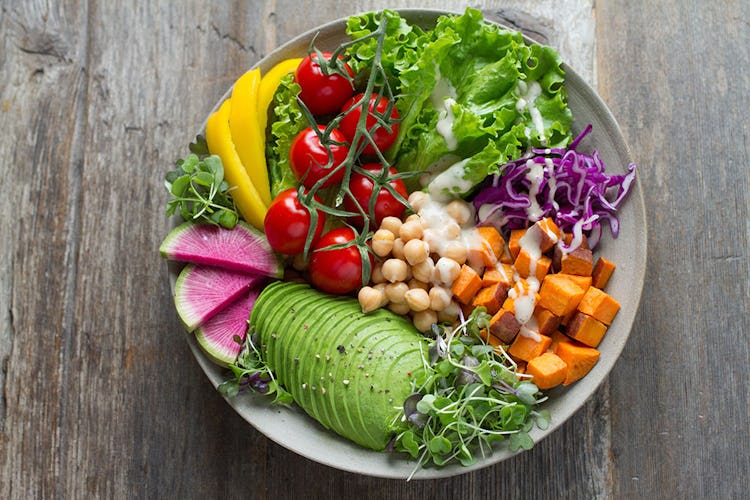
1. Foods containing added sugar. Sweets such as candy, pastries, sweetened drinks (sodas and high-sugar energy and sports drinks), sweetened foods (such as yogurt with fruit on the bottom).
2. Refined grains. White bread (and other low-fiber breads), white rice, pasta, crackers, bagels, baked goods.
3. Whole grains/starches. Brown rice, oats, whole-grain bread, quinoa.
4. Fruit. Apples, bananas, peaches, pineapples, pears, berries, etc.
5. Starchy vegetables. Carrots, potatoes, pumpkin, squash, beets, etc.
6. Green vegetables. Asparagus, broccoli, cabbage, lettuce, spinach, Brussels sprouts, etc.
Eliminating sugary foods doesn’t have to mean cutting out all snacks and desserts. You can swap foods from the lower levels of the spectrum in for the ones on the higher rungs to avoid hunger and ease temptation. For example, start substituting strawberries for Starbursts™. If you usually eat cheeseburgers and drink soda at lunch, try switching to burgers in whole-grain buns or lettuce wraps and sip on sparkling water.
If you already eat pretty healthy but want to reduce your sugar intake even further, identify the highest-sugar food category you eat from the most and aim to replace it with more foods from the next category down. Perhaps you’re a regular consumer of vegetables and high-protein foods, but you have a weak spot for refined-grain products such as bagels at breakfast or dinners of pasta made with bleached flour. In this case, you could switch to whole-grain toast at breakfast and whole-grain pasta dinners. Once you get acclimated to the taste of those foods, you can go a step further and try vegetable-based alternatives, such as lettuce wraps instead of tortillas for your tacos, spaghetti squash instead of whole-grain pasta, or cauliflower rice in place of regular rice.
Never remove a carb group from your diet if you are still eating foods from a group above it. For example, don’t cut out apples if you are still gorging on bagels. Apples have plenty of vitamins, minerals, and fiber that bagels don’t, so eliminating them before you do white dough makes no sense.
If you’re still stumped on how to construct a low-sugar meal for yourself, Ortega recommends filling half your plate with non-starchy vegetables, dressed with olive or avocado oil. Fill the rest of the plate with a protein-rich food (such as meat or fish). “Even if you decide to try a dessert afterward,” she says, “you’ll be less likely to indulge if you’ve filled up on low-sugar veggies.”
Another strategy that may help you to replace carbs in your diet without feeling hungry: eat more fat. Not only is fat more satiating than sugar, research suggests it may be a lot healthier to base your diet on long-term. A 2017 study on populations in 18 different countries found that higher-fat diets were not associated with cardiovascular disease, whereas high-carb intakes were associated with a higher risk of all-cause mortality. Researchers went on to say that saturated fat intake seemed to have an inverse association with risk of stroke. So keep organic cheeses and nuts on hand for easy snacks, and don’t be shy about eating pasture-raised beef and wild salmon.
How Long Does it Take to Lose Weight?
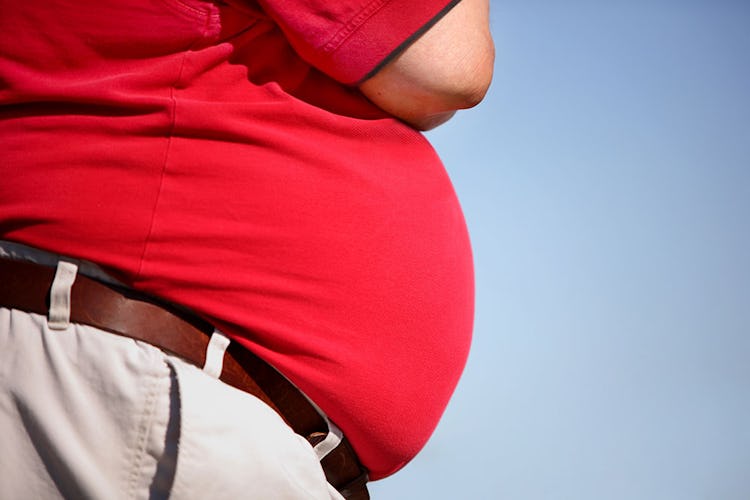
To lose weight and keep it off in a healthy manner, you need to create a calorie deficit with your diet and aim to lose one to two pounds per week. Any more than that, and your weight loss won’t be pure fat—it will be water and lean mass, including muscle.
Ortega says that clients who restrict sugar usually see quick weight loss. “Fiber, protein, and fats are more satiating, and provide longer-lasting energy than simple sugars,” she says. “By avoiding blood sugar spikes and drops, you are also able to avoid food cravings that lead to excessive calorie intake and fat storage.”
What Foods Have Zero (or Low) Sugar?
Refer back to the carb hierarchy above and you’ll see that vegetables, particularly greens, have little to no sugar, so they’re always a safe bet when you’re hungry. Of course, the typical keto-friendly foods—meats, fish, eggs, cheeses, avocados, and other foods rich in protein and fat—are sugar-free. Below is a short list of no- to low-sugar options.
- Animal proteins (beef, chicken, turkey, pork, fish, etc.)
- Unrefined oils (avocado, coconut, olive, etc.)
- Butter, ghee, cheese
- Avocado
- Eggplant
- Green beans
- Kelp noodles
- Zucchini noodles
- Mushrooms
- Spinach
- Watercress
- Radish
- Kale
- Celery
- Broccoli
- Bell pepper
- Cucumber
- Asparagus
- Tomato
- Mustard
- Salsa
- Coffee
- Tea
- Watermelon
- Lemons/limes
- Whole milk
- Berries
Remember that sugar/carbs are a big energy source for the body, so, unless you’re ready to commit to a very low-carb or keto diet, you shouldn’t aim to stop eating carbs entirely. The more active you are, the more carbs you should consume to fuel your workouts, recreation, etc. For instructions on how to set up a lower-carb diet that still permits enough sugars to support an active lifestyle (and allows you to enjoy a wide variety of foods), see the Mod Keto eating plan in our FREE ebook on the keto diet.
Are Artificial Sweeteners Dangerous?
Many people try to replace the sugar in their diets with drinks and snack foods that contain artificial sweeteners, which typically contain few or no calories and have little impact on insulin. According to Harvard’s School of Public Health, research is still inconclusive as to whether these sugar substitutes are safe long-term, but they may be useful for weaning people off sugar—that is, if they don’t compensate by eating greater amounts of food overall.
Ortega cautions against consuming artificial sweeteners. “They may prompt you to continue to crave the taste of sugar,” she says, which can lead you to over-consume sweet foods, or just more food, and result in weight gain. “They may also negatively impact your microbiome.” That is, the balance of bacteria in your gut that help you digest and assimilate food properly. The gut biome is also intertwined with your immune system. Instead, Ortega suggests focusing on eating more real foods with lower sugar content.
The No-Sugar Diet Plan
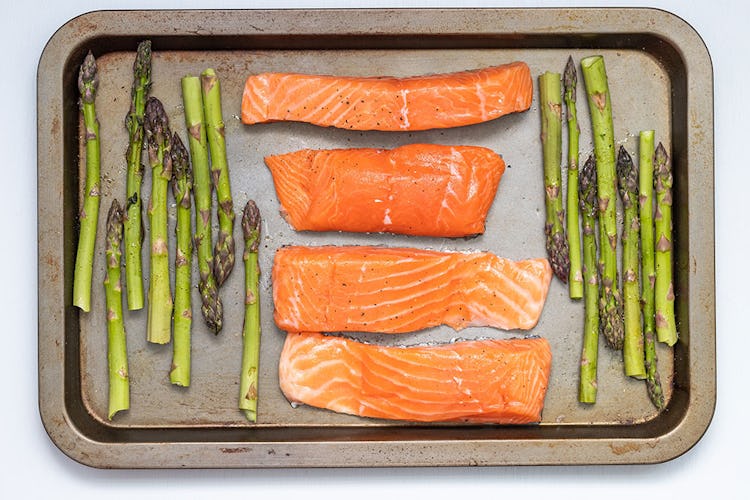
Below is an example of how a person who wants to minimize sugar in his/her diet could eat over the course of a day, courtesy of Ortega.
Breakfast
2 eggs, any style
1/2 avocado
1 cup zucchini, sautéed with olive oil
Snack
8 walnut halves
Lunch
3 oz. grilled chicken (breast or thighs)
1 cup of steamed cauliflower with 1 oz. melted cheese
1 cup steamed green beans
Dinner
3 oz. wild-caught salmon, baked
1 cup asparagus and 1 cup mushrooms, sauteed in 2 tbsp ghee butter
Dessert
8g 100% dark chocolate shavings with 2 tbsp coconut whipped cream
How Do I Look for Sugar on Food Labels?
Shakespeare told us that a rose by any other name would smell as sweet. It also holds that sugar by any other name—no matter what manufacturers try to disguise it with on a label—is still sugar. By knowing the different names sugar can be called, you can make better choices when faced with confusing food labels.
According to the U.S. Dietary Guidelines, some of the names that added sugars can go by on food labels can include the following. If you see these near the beginning of an ingredients’ list, avoid the product, or at least use small servings.
- anhydrous dextrose
- brown sugar
- confectioners powdered sugar
- corn syrup
- corn syrup solids
- dextrose
- fructose
- high-fructose corn syrup (HFCS)
- honey
- invert sugar
- lactose
- malt syrup
- maltose
- maple syrup
- molasses
- nectars (e.g., peach nectar, pear nectar)
- pancake syrup
- raw sugar
- sucrose
- white granulated sugar
Remember, sugar is sugar, regardless of what name it goes by. “Whether they are adding coconut sugar or traditional sugar to a product,” says Roussell, “it doesn’t make any difference to your body.”
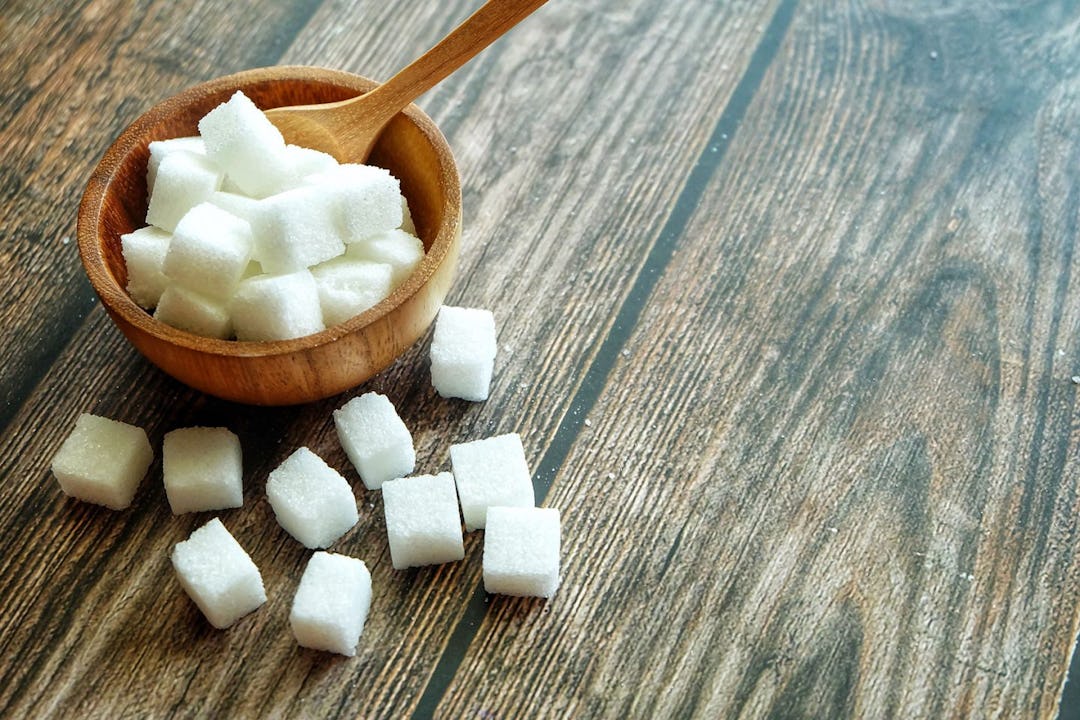
)
